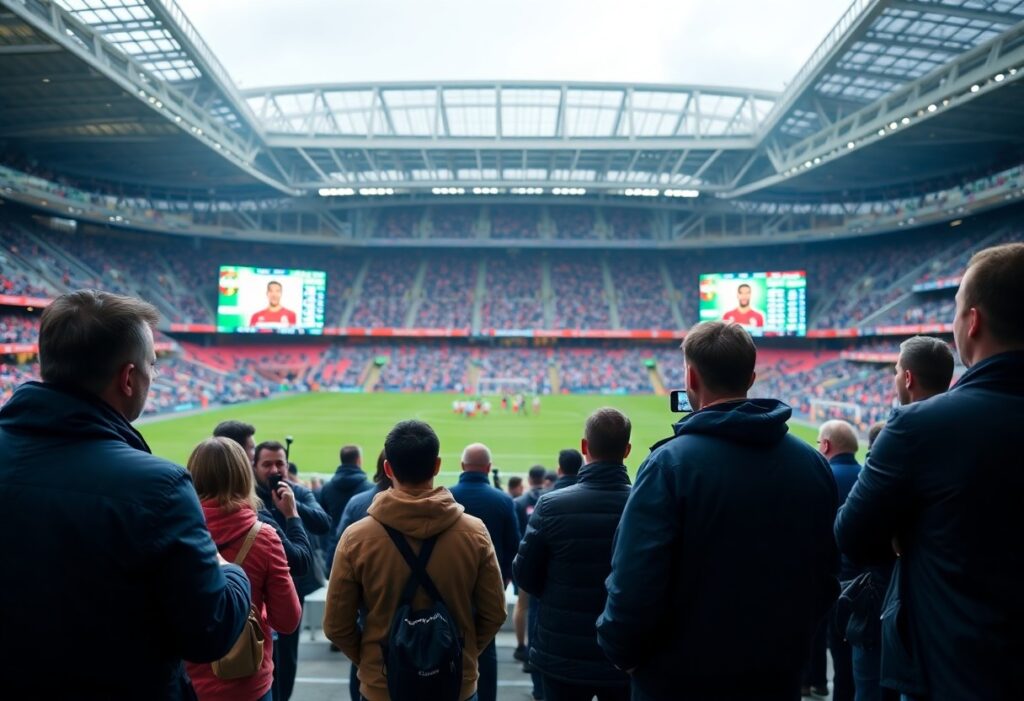
Over the years, the Premier League transfer system has evolved into a complex framework that governs player movement between clubs, reflecting both the financial power and competitive nature of English football. This guide will explore the significant aspects of the transfer process, including important timelines, regulations, and the impact of fees and contracts. Understanding these elements is vital for fans and aspiring professionals alike, providing insights into how teams build their rosters and navigate the ever-changing landscape of player transfers.
Types of Transfers
The Premier League transfer system encompasses various methods for clubs to acquire players, each with distinct implications and rules. Understanding these transfer types is necessary for fans and stakeholders alike.
- Permanent Transfers
- Loan Deals
- Free Transfers
- Trade Deals
- Youth Promotions
| Transfer Type | Description |
|---|---|
| Permanent Transfers | A player is sold outright from one club to another. |
| Loan Deals | A player temporarily plays for a different club, retaining their original contract. |
| Free Transfers | Players can join new clubs after their contracts expire without compensation. |
| Trade Deals | Involves exchanging players between clubs. |
| Youth Promotions | Bringing players from academies into the first team. |
Permanent Transfers
Permanent transfers are the most straightforward type where clubs buy players outright. This process typically involves a transfer fee negotiated between the buying and selling clubs. For instance, Jack Grealish’s move from Aston Villa to Manchester City in 2021 for a record fee of £100 million exemplifies how significant these transactions can be. Once completed, the player is fully registered with the new club and can only return to the original team under specific circumstances.
Loan Deals
Loan deals allow clubs to send players temporarily to other teams while retaining their rights. This arrangement is beneficial for player development and club strategy. For instance, Chelsea’s practice of loaning young talents like Conor Gallagher to gain first-team experience in the Premier League or elsewhere illustrates its strategic advantage. Clubs often agree to cover a portion of the player’s salary, and specific terms can be included, such as optional buy clauses.
Loan deals can vary significantly in terms, such as duration, financial arrangements, and purpose. Typically lasting six months to a year, they enable clubs to give players much-needed playing time away from their parent club. High-profile examples include players like Philippe Coutinho, who flourished through a loan at Bayern Munich before joining permanently. Teams often negotiate aspects like the player’s availability for matches against the parent club, emphasizing the need for clarity in these agreements.
Step-by-Step Transfer Process
| Step | Description |
|---|---|
| 1. Initial Interest | Clubs express interest in a player, often leading to informal discussions. |
| 2. Pre-Transfer Negotiations | Clubs negotiate a transfer fee and player terms, involving agents and representatives. |
| 3. Medical Assessments | Players undergo medical tests to ensure fitness and evaluate potential risks. |
| 4. Contract Finalization | Final agreements are made, and contracts are signed. |
| 5. Registration | New contracts are submitted to the Premier League for approval. |
Pre-Transfer Negotiations
During pre-transfer negotiations, clubs discuss the terms of a potential transfer, including the transfer fee, player salary, bonuses, and any other relevant conditions. This phase often involves agents and can include multiple rounds of discussions to reach an agreement satisfactory to both clubs.
Medical Assessments
Medical assessments are imperative to ensure a player’s fitness before finalizing a transfer. Clubs conduct thorough examinations to assess any existing injuries or health concerns, which can impact the player’s performance and availability.
Typically, the medical assessments include a series of tests such as cardiovascular screenings, orthopedic evaluations, and imaging tests (e.g., MRIs). Clubs may hire independent sports doctors for credibility. If any serious issues arise during these assessments, clubs may negotiate a lower fee or reconsider the transfer altogether, sometimes resulting in a contingent deal based on recovery or performance assurances.
Factors Influencing Transfers
The landscape of player transfers is shaped by several key factors. These include player performance, club financial status, market demand, and contract length, all of which can significantly impact a transfer’s feasibility and implications. In addition, the influence of agents, managerial strategies, and club reputations come into play. Transfers are not merely about talent acquisition; they involve a complex interplay of various dynamics. Assume that a club is evaluating multiple players under these criteria before making a final decision.
Player Performance
Player performance is a critical element when clubs assess transfer options. High-performing players, especially those excelling in high-pressure leagues or international tournaments, often command higher fees. For instance, a standout season in the Premier League can spike a player’s market value, making them more attractive for potential buyers. Clubs closely scrutinize stats such as goals, assists, and overall impact, as these metrics can dictate transfer negotiations.
Club Financial Status
The financial status of a club plays a pivotal role in transfer decisions. Clubs with strong revenue streams, such as those in the Premier League, can invest heavily in new talent, while others may need to offload players to balance their books. Financial Fair Play regulations further complicate these dealings, as clubs must ensure they don’t exceed spending limits relative to their income. This can result in strategic sales or loans to maintain sustainability.
For example, in recent seasons, clubs like Manchester City and Chelsea have demonstrated their financial might by securing high-profile players at substantial fees, while clubs with tighter budgets, such as those in the Championship, often look for bargain buys or promising young talents from lower leagues. The disparity in financial status creates a competitive advantage, allowing wealthier clubs to not only attract top players but also sustain squad depth that can lead to improved performance on the pitch. Thus, the interplay between financial health and transfer activity remains a vital consideration in the Premier League’s ecosystem.
Tips for Clubs
For clubs navigating the transfer system, optimizing strategies is key to success. Establishing strong networks, leveraging data analytics, and focusing on player development can enhance recruitment outcomes. Additional strategies include:
- Build relationships with agents and other clubs.
- Invest in scouting technology to identify potential signings.
- Maintain financial flexibility to seize opportunities.
- Communicate clearly during negotiations to avoid misunderstandings.
After implementing these practices, clubs can significantly increase their chances of successful transfers.
Scouting and Recruitment
Scouting and recruitment serve as the backbone of a club’s transfer strategy. Utilizing in-depth analytics and scouting networks enables clubs to discover hidden talents across various leagues. By combining traditional scouting with modern technology, teams can assess players more accurately and find valuable assets often overlooked by bigger clubs.
Effective Negotiation Strategies
Effective negotiation strategies can make or break a transfer deal. Clubs should adopt a collaborative mindset, understanding the needs of both parties. Establishing a clear valuation of the player and drawing on market data can strengthen a club’s position. Additionally, being prepared to offer flexible payment structures or incentives can make offers more appealing.
In practice, clubs like Leicester City have successfully employed these strategies. Their approach often involves comprehensive research into a player’s performance metrics and motivational factors to anticipate demands during negotiations. Furthermore, clubs are advised to remain patient and avoid rushing decisions, as this can lead to unfavorable terms. Ultimately, a well-prepared approach, focusing on win-win outcomes, leads to successful transfers.
Pros and Cons of the Transfer System
| Pros | Cons |
|---|---|
| Increases competition among clubs | Can lead to inflated player prices |
| Allows clubs to refresh their squad | Potential for player unrest |
| Facilitates talent scouting | Complex regulations can hinder moves |
| Encourages strategic long-term planning | Risk of financial mismanagement |
| Provides opportunities for younger players | Pressure on players to perform |
| Enhances fan engagement | Short-termism in player contracts |
| Promotes international exposure | Disrupts team chemistry |
| Ensures compliance with regulations | Transfer windows create urgency |
| Can enhance club revenues | Limitations on player movement |
| Encourages investment in infrastructure | Possibility of exploitation by agents |
Advantages for Clubs
For clubs, the transfer system offers strategic advantages such as the ability to acquire top talent, align team dynamics, and fill gaps in specific positions. Clubs can capitalize on market demands, ensuring they remain competitive. Additionally, successful transfers can significantly enhance a club’s financial standing and brand value, drawing in larger fan bases and sponsorships.
Challenges for Players
Players face various challenges within the transfer system that can impact their careers. Frequent transfers can lead to instability, affecting their performance and mental well-being. Competition for places at clubs intensifies, placing additional pressure on players to consistently deliver results.
Moreover, players may struggle to adapt to new environments, cultures, and team dynamics, which can hinder their ability to showcase talent. Contract negotiations can also become a battleground, with agents and clubs often prioritizing financial terms over a player’s personal preferences. Young talents, in particular, risk being sidelined as clubs focus on more established names. Overall, the transfer system, while beneficial, presents significant hurdles for players navigating their professional journeys.
Conclusion
With this in mind, understanding the Premier League transfer system is imperative for fans, clubs, and players alike. It encompasses key regulations, transfer windows, and financial considerations that shape team compositions and strategies. By navigating this complex framework, clubs can strategically acquire talent, while players have the opportunity to find their ideal environments. Mastery of these processes not only enhances the competitive nature of the league but also enriches the overall football experience.
FAQ
Q: What is the transfer window in the Premier League?
A: The transfer window is a specific period during which Premier League clubs can buy, sell, or loan players. There are two main transfer windows each season: the summer window, which usually opens in early July and closes at the end of August, and the winter window, typically open from early January to the end of that month.
Q: How are transfer fees negotiated between clubs?
A: Transfer fees are negotiated between the buying and selling clubs, often involving discussions about the player’s value based on performance, potential, and market demand. Clubs may also consider other factors such as player contracts and financial conditions. Once both clubs reach an agreement, a medical examination and personal terms with the player are typically arranged.
Q: What is the role of agents in the transfer process?
A: Agents represent players in transfer negotiations with clubs. They help players understand their value, facilitate communication between clubs, and negotiate contracts, including salary and bonuses. Agents play a significant part in ensuring that the player’s interests are upheld throughout the transfer process.


